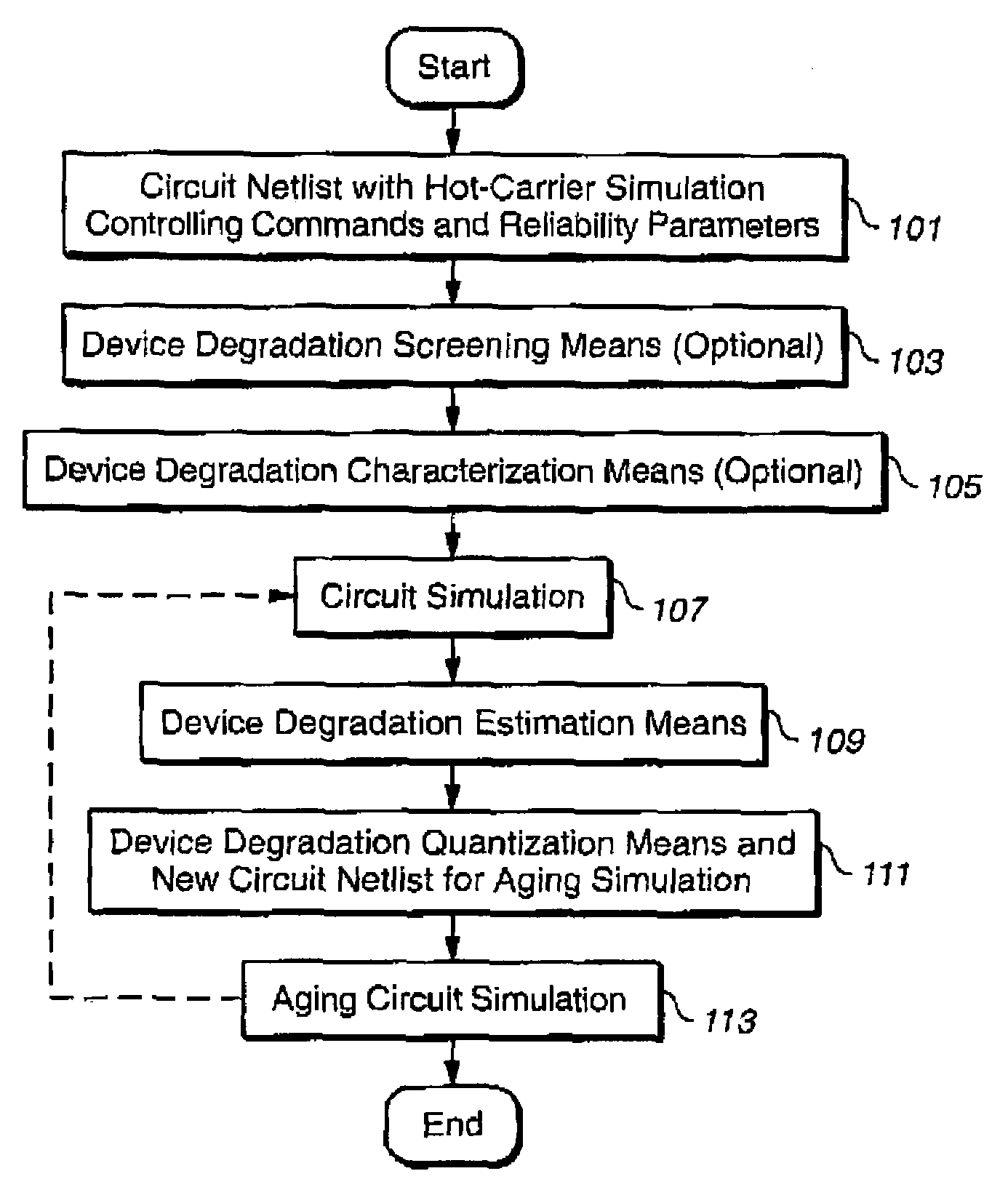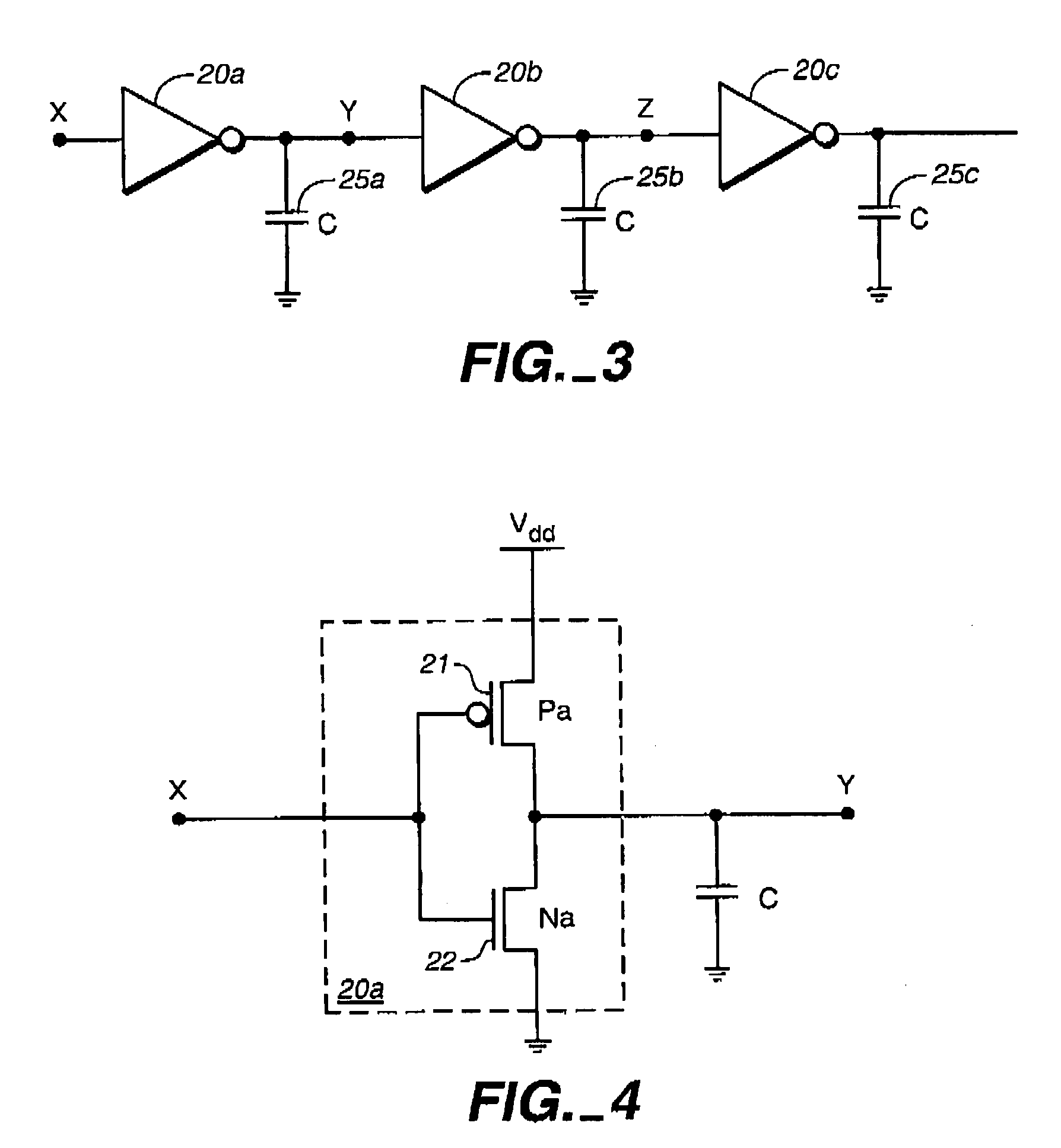Hot carrier circuit reliability simulation
a hot carrier circuit and reliability simulation technology, applied in the direction of electric/magnetic computing, instruments, analogue processes for specific applications, etc., can solve the problems of pmos transistor b>10/b> deterioration due to device aging, oxide/silicon interface above channel region damage, and the design of such circuits is extremely complicated. , to achieve the effect of reducing the time required
- Summary
- Abstract
- Description
- Claims
- Application Information
AI Technical Summary
Benefits of technology
Problems solved by technology
Method used
Image
Examples
Embodiment Construction
[0033]The various aspects of the present invention will be described with respect to the flow chart of FIG. 5. As described in the following, this flow differs from the prior art methods in some of the steps included as well as in the details of some of the steps that are found in the prior art. Although the discussion is mainly in terms of aging due to hot carriers, the techniques generally apply to circuit degradation due to the degradation of its constituent devices from other mechanisms.
[0034]Step 101 provides the netlist describing the circuit that will have the simulation controlling commands and reliability parameters of the present invention. This will include the various connections of the circuit elements and model cards for these elements as well as the age models. The age models may be those that are described in provisional U.S. patent application Ser. No. 60 / 236,587, entitled “Hot-Carrier Device Degradation Modeling and Extraction Methodologies”, filed 29 Sep. 2000, wh...
PUM
 Login to View More
Login to View More Abstract
Description
Claims
Application Information
 Login to View More
Login to View More - R&D
- Intellectual Property
- Life Sciences
- Materials
- Tech Scout
- Unparalleled Data Quality
- Higher Quality Content
- 60% Fewer Hallucinations
Browse by: Latest US Patents, China's latest patents, Technical Efficacy Thesaurus, Application Domain, Technology Topic, Popular Technical Reports.
© 2025 PatSnap. All rights reserved.Legal|Privacy policy|Modern Slavery Act Transparency Statement|Sitemap|About US| Contact US: help@patsnap.com



